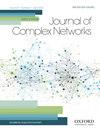检测网络攻击的机器学习程序
IF 1.5
4区 数学
Q2 MATHEMATICS, INTERDISCIPLINARY APPLICATIONS
引用次数: 0
摘要
本文的目的是评估是否可以使用简单的机器学习算法来确定给定网络是否受到攻击以及如何受到攻击。该过程基于$k$-最近邻和随机森林分类方案,使用完整和攻击的Erd\H{o} - r \ enyi, barabsi - albert和Watts-Strogatz网络来训练算法。我们在这里考虑的攻击类型是随机故障和最大程度或最大间隔节点删除。每个网络都有一个包含4个指标的列表来表征,即归一化倒最大度、全局聚类系数、归一化平均路径长度和分类度:统计分析表明,这一列表的图指标在完整或损坏的网络中确实有显著差异。我们通过选择人工网络和真实网络,执行攻击并将分类算法应用于结果图来测试该过程:这里讨论的过程能够区分完整网络和被最大间数删除的最大程度攻击的网络,但不能检测随机故障。我们的研究结果表明,这种方法可以为分析和检测网络攻击提供基础。本文章由计算机程序翻译,如有差异,请以英文原文为准。
A machine-learning procedure to detect network attacks
The goal of this note is to assess whether simple machine learning algorithms can be used to determine whether and how a given network has been attacked. The procedure is based on the $k$-Nearest Neighbor and the Random Forest classification schemes, using both intact and attacked Erd\H{o}s-R\'enyi, Barabasi-Albert and Watts-Strogatz networks to train the algorithm. The types of attacks we consider here are random failures and maximum-degree or maximum-betweenness node deletion. Each network is characterized by a list of 4 metrics, namely the normalized reciprocal maximum degree, the global clustering coefficient, the normalized average path length and the assortativity: a statistical analysis shows that this list of graph metrics is indeed significantly different in intact or damaged networks. We test the procedure by choosing both artificial and real networks, performing the attacks and applying the classification algorithms to the resulting graphs: the procedure discussed here turns out to be able to distinguish between intact networks and those attacked by the maximum-degree of maximum-betweenness deletions, but cannot detect random failures. Our results suggest that this approach may provide a basis for the analysis and detection of network attacks.
求助全文
通过发布文献求助,成功后即可免费获取论文全文。
去求助
来源期刊

Journal of complex networks
MATHEMATICS, INTERDISCIPLINARY APPLICATIONS-
CiteScore
4.20
自引率
9.50%
发文量
40
期刊介绍:
Journal of Complex Networks publishes original articles and reviews with a significant contribution to the analysis and understanding of complex networks and its applications in diverse fields. Complex networks are loosely defined as networks with nontrivial topology and dynamics, which appear as the skeletons of complex systems in the real-world. The journal covers everything from the basic mathematical, physical and computational principles needed for studying complex networks to their applications leading to predictive models in molecular, biological, ecological, informational, engineering, social, technological and other systems. It includes, but is not limited to, the following topics: - Mathematical and numerical analysis of networks - Network theory and computer sciences - Structural analysis of networks - Dynamics on networks - Physical models on networks - Networks and epidemiology - Social, socio-economic and political networks - Ecological networks - Technological and infrastructural networks - Brain and tissue networks - Biological and molecular networks - Spatial networks - Techno-social networks i.e. online social networks, social networking sites, social media - Other applications of networks - Evolving networks - Multilayer networks - Game theory on networks - Biomedicine related networks - Animal social networks - Climate networks - Cognitive, language and informational network
 求助内容:
求助内容: 应助结果提醒方式:
应助结果提醒方式:


